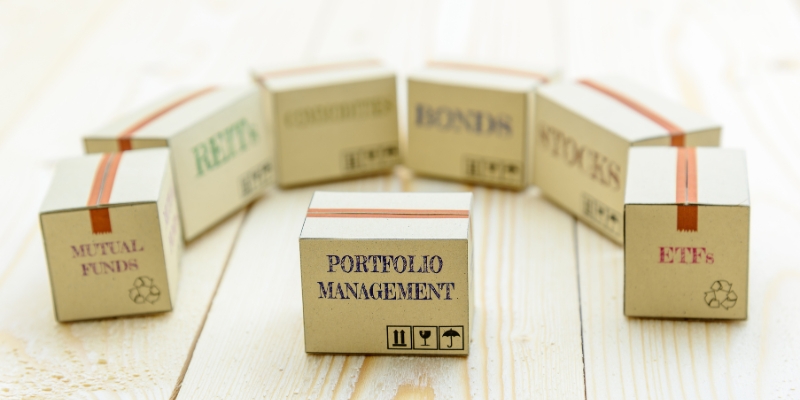Retirement Planning Essentials: How to Develop a Strong Investment Portfolio
Nov 14, 2023 By Kelly Walker
You are planning for retirement and wondering: How to Build an Investment Portfolio for Retirement? Worry not; we will tell you how to make an investment portfolio. It's a process that needs thoughtful planning, some knowledge of finance, and a clear idea of what you want for your retirement.
Set Clear Retirement Goals:
Start by figuring out what your retirement looks like. How much money will you need? When do you plan to retire? Answering these questions will help you set a clear target.
Understand Your Time Until Retirement:
You can afford to take more risks if you have many years until retirement. If retirement is close, you might want a more conservative approach.
The Importance of Diversification: Spread Your Investments Across Different Types
Don't put all your eggs in one basket. Mix different types of investments like stocks, bonds, and possibly real estate. This helps protect your money if one kind of investment does poorly.
Consider Low-Cost Options:
Index funds and exchange-traded funds (ETFs) are suitable for diversification and usually have lower fees than actively managed funds.
How to Allocate Your Investments
Younger Investors:
If you're younger, consider investing more in stocks. They're riskier but have higher growth potential over the long term.
Older Investors:
As you get closer to retirement, shift more into bonds. They are less risky and provide regular income, applicable during retirement.
Regular Check-Ups and Adjustments: Keep an Eye on Your Portfolio
Every year, take a look at your investments. Please ensure they still match your goals and the level of risk you're comfortable with.
Balance Your Investments:
If one type of investment has done well or poorly, you might need to buy or sell some of it to keep your portfolio balanced the way you want it.
Think About Taxes: Use Tax-Advantaged Accounts
Investing through retirement accounts like 401(k)s or IRAs can save you money on taxes. Choose between traditional accounts (pay taxes later) or Roth accounts (pay taxes now, but not later).
When to Get Help: Consider Talking to a Professional
If you find all this overwhelming, a financial advisor can help. They can give advice tailored to your situation.
Building a retirement portfolio doesn't have to be complicated. Start with clear goals, diversify your investments, adjust them as you get closer to retirement, and don't forget about taxes. Reviewing and revising your investments will help you stay on track toward a comfortable retirement.

The Necessity of Building an Investment Portfolio
Financial Security in Retirement:
Building an investment portfolio is crucial, especially for ensuring financial comfort in retirement. As people live longer, the financial resources needed for a relaxed lifestyle after retirement also increase. By thoughtfully creating an investment portfolio, you can accumulate enough resources to comfortably meet your living expenses once your regular job income stops.
Combating Inflation:
Over time, inflation diminishes the buying power of money. Simply saving money without investing can lead to a decrease in its real value. Investments, particularly those with a potential for higher returns like stocks, can grow your wealth at a rate that outpaces inflation, preserving or even increasing your purchasing power.
Achieving Financial Goals:
Beyond retirement, an investment portfolio can help achieve various financial goals, such as buying a house, funding education, or even starting a business. By investing, you can grow your wealth faster than by saving, helping you reach these goals sooner.
Risk Management:
Investment portfolios allow diversification, spreading your investments across different assets (stocks, bonds, and real estate). This diversification can help manage risk. If one investment doesn't do well, others might do better, helping to keep your portfolio's overall performance steady.
Income Generation:
Investments can also generate income through dividends or interest, a supplementary income stream during your working years and retirement. This can be particularly important for retirees relying on a fixed income.
Wealth Transfer:
Creating an investment portfolio is a strategic way to ensure your wealth endures beyond your lifetime. It enables accumulating assets over the years, which can then be passed down to your descendants or allocated to philanthropic endeavors you value.
Constructing an investment portfolio is crucial for maintaining financial security during retirement years, offsetting the effects of inflation, reaching diverse financial objectives, mitigating risks, producing supplementary income, and orchestrating the transfer of your wealth. It's a fundamental component of a comprehensive financial strategy.

Why Start Early with Retirement Planning?
Embarking on retirement planning at an early stage is akin to planting a tree. The sooner you plant it, the more time it has to grow strong and sturdy, providing shade and fruits for years. Similarly, starting your retirement planning early gives your investments ample time to mature and compound, turning even modest savings into significant funds over time.
When you begin investing early, you harness the power of compounding interest - where your earnings generate their earnings. Imagine a snowball rolling down a hill, gathering more snow and size; that's what your investments can do over time. The longer your investment period, the larger this snowball grows.
Furthermore, starting early means you can contribute smaller amounts that add up over time, rather than playing catch-up later in life with more significant sums. This approach is often more manageable and less stressful, fitting comfortably into your budget.
Additionally, early retirement planning instills financial discipline. It encourages a habit of saving and investing, leading to a more thoughtful and informed approach to spending and money management in other areas of your life.
In essence, starting your retirement planning early is not just about ensuring financial security for the future; it's about creating a habit of financial mindfulness.
Conclusion:
In conclusion, constructing a well-balanced investment portfolio is indispensable in securing a financially stable and fulfilling retirement. By understanding your retirement goals, embracing diversification, adopting a thoughtful allocation strategy, and regularly monitoring and rebalancing your investments, you can effectively navigate the path to financial freedom. Moreover, considering tax implications and seeking professional advice when necessary further enhance your portfolio's potential. Ultimately, an investment portfolio isn't just about growing wealth; it's about creating a sustainable financial foundation supporting your long-term goals and dreams, ensuring that your retirement years are as rewarding and secure as possible.

Rick Novak Nov 14, 2023

Kelly Walker Nov 16, 2023

Rick Novak Nov 14, 2023

Kelly Walker Nov 15, 2023

Rick Novak Nov 15, 2023

Rick Novak Nov 14, 2023
